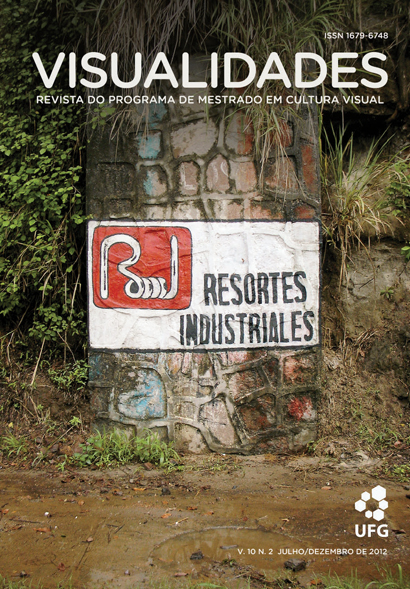The anarchitecture of Gordon Matta-Clark: political autonomism and aesthetic activism - DOI 10.5216/vis.v10i2.26554
DOI:
https://doi.org/10.5216/vis.v10i2.26554Abstract
We intend to consider the contemporary relationships between art, politics and resistance, from the 1960s and 1970s artistic practices, established by the american architect, performer and autonomist activist, Gordon Matta-Clark (1943-1978). We will use, especially for such a task, the concepts proposed by Gilles Deleuze (and Felix Guattari), notably in his book What is philosophy?, of the “becoming-revolutionary of art”, “creative fabulation” and “acts of creation / acts of resistance”.
Keywords: Gordon Matta-Clark, aesthetic and political activism, acts of creation, becoming-revolutionary of art, creative fabulation, Gilles Deleuze
Downloads
Downloads
Published
How to Cite
Issue
Section
License

This work is licensed under a Creative Commons Attribution 4.0 International License .
Authors who publish in this journal agree to the following terms:
a. Authors retain the copyright and grant the journal the right of first publication, with the work simultaneously licensed under the Creative Commons Attribution 4.0 License which allows the sharing of work with acknowledgment of authorship and initial publication in this journal.
b. Authors are authorized to take additional contracts separately, for non-exclusive distribution of the version of the work published in this journal (eg publish in institutional repository or as a book chapter), with acknowledgment of authorship and initial publication in this journal.
c. Authors are allowed to publish and distribute their work online (eg in institutional repositories or on their personal page) after the initial publication in this journal, as this can generate productive changes, as well as increase the impact and citation of the published work ( See The Effect of Free Access).
Every effort has been made to identify and credit the rights holders of the published images. If you have rights to any of these images and have not been correctly identified, please contact the Visuals magazine and we will publish the correction in one of the next issues.






